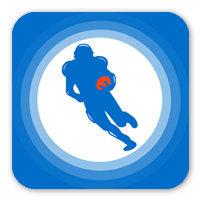Elliott looks at pitchers with surprising starts recently. These SPs could emerge as fantasy baseball waiver wire targets for Week 18 in 2025, or just mirages.
Welcome back to the "Are You For Real?" series as we dive into Week 18 of the 2025 fantasy baseball season. For those unfamiliar, this is a weekly column where we examine starting pitchers who had surprisingly strong starts over the past week and put them under the microscope to determine whether they're legitimate or just smoke and mirrors.
The trade deadline is this week, but instead of focusing on who's going to be on a new major league team, let's focus on who's going to be on a new fantasy team. Are any of these three AL right-handers worth adding? This week, I'm breaking down Zebby Matthews' strong start against Washington, J.T. Ginn dominating the Astros, and Max Scherzer turning back the clock in Detroit.
Roster percentages are taken from Yahoo! and are accurate as of July 28.
Be sure to check all of our fantasy baseball lineup tools and resources:- Fantasy baseball trade analyzer
- BvP matchups data (Batter vs. Pitcher)
- PvB matchups data (Pitcher vs. Batter)
- Who should I start? Fantasy baseball comparisons
- Daily MLB starting lineups
- Fantasy baseball closer depth charts
- Fantasy Baseball live scoreboard
- Fantasy baseball injury reports
Zebby Matthews, Minnesota Twins – 22% Rostered
2025 Stats (prior to this start): 23 IP, 6.26 ERA, 3.26 FIP, 21.2% K-BB%
07/25 vs. WSH: 6 IP, 2 H, 0 ER, 0 BB, 7 K
Matthews was fantastic on Friday, blanking the Nationals over six innings for his first quality start and second victory of the season. Matthews has been volatile when up in the majors this season, but there’s big potential in this arm. Is Daniel Zebulon Matthews ready to put it all together, or should we ignore this start?
Originally an eighth-round pick by Minnesota back in 2022, Matthews became a noteworthy prospect thanks to his strong minor league performances. Matthews has straight up dominated the minor leagues; even this season, Matthews has a 1.72 ERA and 11.54 K/9 in eight AAA starts. Matthews works with a five-pitch mix consisting of a four-seam fastball, slider, cutter, changeup, and curveball.
Matthews’ most-used pitch is the four-seamer, but it’s not his best pitch. That distinction goes to his slider, which Matthews throws 28.3% of the time. An 88.3 mph offering, Matthews’ slider is a hard, sharp offering with slightly above average movement and spin. Here’s an example from this start.
— Elliott Baas (@ElliottBaasBB) July 28, 2025
Looks pretty nasty there, and opposing batters have really struggled against this pitch. Batters have a .182 AVG, .250 SLG, and .209 wOBA off Matthews’ slider this season. The expected stats suggest that Matthews has earned these results as well, with a .179 xBA, .292 xSLG, and .222 xwOBA. Matthews has an impressive 41.7% whiff rate with the pitch, and he got five of 12 whiffs with the pitch in this start.
Even when batters make contact, they don’t strike the ball well, as opponents have an 83 mph average exit velocity against Matthews’ slider this season. This is a rather small sample size, but this is exactly what we’d like to see from Matthews’ slider. Matthews was known for his slider coming up, and he’s been executing with it thus far. The slider is a big reason why Matthews has a strong 11.79 K/9 through six starts.
So, the slider is awesome, but what else does Matthews have to offer? His most used pitch is the four-seam fastball, and Matthews throws it relatively hard at 96.7 mph. The fastball has painfully average movement and spin, giving it a typical shape and making it easy for opponents to square up. Batters are clobbering Matthews’ fastball for a .359 AVG, .487 SLG, and .390 wOBA. Sure, it’s a small sample size, but the expected stats suggest that Matthews has earned these results.
His fastball has a .326 xBA, .547 xSLG, and .394 xwOBA against. Matthews' fastball also got crushed last season for a .288 AVG, .627 SLG, and .417 wOBA. Batters are just pulverizing the ball with a 94.2 mph average exit velocity and a 20-degree average launch angle against. Plus velocity is just about the only thing this fastball has going for it.
The four-seamer and slider make up the majority of Matthews’ pitch usage; he throws them a combined 72.4% of the time. But Matthews does mix in some other offerings, most frequently his cutter, which he throws 12.5% of the time. When compared to his slider, the cutter leaves a lot to be desired. It’s a harder offering at 92 mph and has much less vertical drop compared to the slider.
Batters have had no problem handling the pitch, batting .333 with a .533 SLG and a .440 wOBA against. Matthews has a pitiful 15.6% whiff rate with the pitch as well. While it’s again a very small sample size, I don’t see anything too promising about Matthews’ cutter.
He rounds out his repertoire with a changeup and curveball, both of which he throws less than 10% of the time. The changeup is an 86.8 mph offering that he throws more often to left-handed hitters. Batters are hitting .250 off the pitch with a .333 SLG and .252 wOBA. His 27.8% whiff rate is alright, and this could be a good off-speed pitch to complement his slider. He did throw it 17% of the time against Washington, and his changeup usage has been trending up, so perhaps he could start using it more instead of his cutter.
The curveball has some incredible numbers in a very small sample size of just 26 pitches. Batters have yet to get a hit off the pitch, and Matthews has a 66.7% whiff rate. I don’t expect this to become a big part of Matthews’ game, but perhaps it could become a show-me pitch he uses to surprise hitters and keep them on their toes. If Matthews were to develop another devastating breaking ball, he could really take off.
The slider is really impressive for Matthews, and it should give him a healthy strikeout rate throughout his career. That being said, Matthews might be the type of pitcher whose surface stats like ERA and WHIP never match his underlying metrics. See, Matthews has both good control and excellent strikeout capabilities.
That’s an incredible combination of skills to have for a pitcher, and one that should always give Matthews a strong FIP, xFIP, and K:BB. But, he has a hittable fastball and cutter that he’s using regularly, which could lead to runs and hits against him, driving up ERA and WHIP. There’s a lot to like about Matthews, but his bad fastball scares me, and he may never overcome it.
Verdict:
The slider is as advertised; an incredible offering that should have Matthews racking up strikeouts. He should be a good source of strikeouts thanks primarily to his slider, but he also has a solid changeup and an intriguing curveball that I’d like to see him use more often. The biggest drawback in Matthews’ game is a weak fastball. Despite having plus velocity, Matthews’ four-seamer has average movement and spin and comes in rather straight, making it lack deception.
Matthews has solid control in addition to his strikeout prowess, and I think the raw skills are good enough that he’s worth the add in most leagues. There aren’t many pitchers with breakout potential still sitting on waivers, and while Matthews is a long shot to break out midseason, I do think the potential is too enticing to ignore. I’m not ready to trust him every time out, but I’d start by streaming him against weak opponents. His next start is scheduled for Wednesday against Boston, and I’d avoid starting him there. Boston has a .322 wOBA against right-handed pitchers this season.
J.T. Ginn, Athletics – 3% Rostered
2025 Stats (prior to this start): 38 IP, 4.50 ERA, 4.85 FIP, 20.6% K-BB%
07/27 @ HOU: 6 IP, 3 H, 0 ER, 0 BB, 4 K
Ginn has been outstanding since returning to the Athletics’ rotation earlier this month, having allowed just one earned run through two starts. Ginn now has a 3.89 ERA and 3.09 xFIP on the year, and as someone widely available in leagues, he could be an intriguing pickup down the stretch. Is there any value to be had with Ginn, or should we pass?
John Tonic (yes, this is his real middle name) Ginn was originally drafted as the 30th pick in 2018 by the Dodgers, but elected to play college baseball instead. He was then drafted in the second round by the Mets in 2020 and was traded to the Athletics in 2022 in the Chris Bassitt deal. Ginn wasn’t much of a prospect on a national level, but he was ranked as the Athletics’ fifth-best prospect coming into the 2025 season. Ginn works with a four-pitch mix consisting of a sinker, slider, cutter, and changeup.
Ginn may have four pitches at his disposal, but he relies heavily on two of them, and that would be the sinker and the slider. He was all about the slider and sinker in this start against Houston, throwing them a combined 84% of the time. We’ll start with the sinker as it’s his most-used pitch at 55.9% on the year and 53% in this start. A 93.9 mph offering, Ginn’s sinker is notable for its strong vertical movement and low spin rate. Here’s an example from this start.
— Elliott Baas (@ElliottBaasBB) July 28, 2025
It’s easy to see why batters struggle to elevate with this pitch, and Ginn has an average launch angle against his sinker of just five degrees, along with a 58.1% ground-ball rate with the sinker. Overall, opponents are hitting .263 with a .384 SLG and .317 wOBA off Ginn’s sinker. The expected stats suggest that Ginn has earned these results as well, with a .247 xBA, .383 xSLG, and .308 xwOBA.
Ginn has long had above-average ground-ball rates as a minor leaguer, and so far, it looks like that skill has translated to the major leagues. While lacking frontline velocity, Ginn’s sinker has a unique shape and should be able to do its job of generating groundballs and getting outs for Ginn.
Ginn’s next most-used pitch has been the slider, which he throws 29% of the time. An 86.4 mph offering, Ginn’s slider is on the harder, sharper end of the spectrum, at least relative to his fastball. He has above-average vertical movement with the pitch, making it loopy and difficult to square up. Here’s an example from this start.
— Elliott Baas (@ElliottBaasBB) July 28, 2025
Looks pretty nasty, but Ginn has gotten mixed results with the pitch so far. Batters are hitting .261 against the slider with a .565 SLG and .356 wOBA, but opponents have a .212 xBA, .449 xSLG, and .287 xwOBA off the pitch as well.
Ginn has a solid 32% whiff rate with his slider, which should help him sustain his overall 26% strikeout rate to some degree, though I suspect that his strikeout rate will drop a few points as Ginn makes more starts. Ginn only got three of 10 whiffs with the slider in this start, good for a 23% whiff rate. While not an elite slider, this is a solid major league offering that can serve as a complement to his sinker.
Ginn rounds out his repertoire with a cutter and changeup, both of which he used 8% of the time each against Houston. The cutter has been used more at 9.7%, but the changeup has been more effective. Throwing it just 5% of the time, batters are hitting .125 with a .500 SLG and .256 wOBA off Ginn’s changeup.
He also has a .123 xBA, .227 xSLG, and .146 xwOBA against the pitch. Most impressive has to be the 52.9% whiff rate, a number that would surely drop if Ginn used the pitch more often, but why not throw it more? He got three whiffs on five swings against Houston with the changeup, and it’s proven effective in a small sample. Ginn will need one of these pitches to emerge as a third option, and while he’s used the cutter more, I favor the changeup.
When it comes to luck, Ginn has managed to be both incredibly lucky and incredibly unlucky in some regards. The main way he’s been lucky is his 84.9% LOB rate. League average LOB rate is 72.6%, so it’s safe to say that Ginn is wildly overperforming, and we could expect regression. At the same time, Ginn has a bloated 24.3% HR/FB ratio, while the league average is 11.5%. We should expect regression on his current 1.84 HR/9.
Ginn has never had a home run rate that high, and in fact, he’s excelled at power suppression throughout his professional career. I also don’t think Ginn can sustain his 9.61 K/9 as a starter. He only has an 8.79 K/9 as a starter this season, and he has just a 10.2% swinging strike rate. He should be able to put up respectable strikeout numbers, but not elite or above average.
Verdict:
Ginn has a solid foundation with his sinker-slider combo, and he should be a decent major leaguer going forward. His sinker, while below average in velocity, has plus movement and can generate groundballs at an above-average clip. His slider isn’t an elite strikeout offering, but it can get whiffs and strikeouts when necessary, and serves as a great secondary option to his sinker. Ginn is still looking to develop a third pitch that can shoulder some of the load on the mound. He uses his cutter about 10% of the time, but the changeup, which he uses 5% of the time, has more encouraging underlying numbers and could emerge as his third pitch if he continues to develop it.
Ginn is managing to get lucky in terms of LOB rate and strikeout rate, but unlucky in the home run department. With a 3.89 ERA, 4.50 FIP, 3.09 xFIP, and 3.01 SIERA, it’s hard to pinpoint where his ERA might end up, but I think he could land between 3.50-4.00 with good control and a decent WHIP. He may not get a lot of wins, but he could be a good, under-the-radar arm to add down the stretch. Pick him up in deep leagues, and keep an eye on him in shallower ones.
Max Scherzer, Toronto Blue Jays – 50% Rostered
2025 Stats (prior to this start): 28 IP, 5.14 ERA, 5.30 FIP, 17.4% K-BB%
07/27 @ DET: 7 IP, 3 H, 3 ER, 0 BB, 11 K
We got vintage Max Scherzer on Sunday, as Mad Max mowed down the Tigers for 11 strikeouts over seven innings. It was his second quality start of the season, but not enough to earn the win as the bullpen surrendered seven runs after Scherzer left the game. Still, this was one of Scherzer’s best outings all season and should have us all wondering if there’s more to come.
Normally, I use this section to dive into a player’s draft position and minor league stock, but Scherzer needs no such analysis. The future Hall-of-Famer was one of the top right-handers in baseball for more than a decade between 2008 and 2022. He started to show cracks in 2023 when he posted a 3.77 ERA in 27 starts, and it was rough for him last season as he made just nine starts after serving as a relative iron man throughout his 20s and 30s. Scherzer works with a five-pitch mix consisting of a four-seam fastball, slider, changeup, curveball, and cutter. He only uses the cutter about 1.8% of the time, but he mixes in his other pitches at least 13.5% of the time.
Scherzer’s most-used pitch has been his fastball, which he throws 46.4% of the time. A 93.7 mph offering, Scherzer has lost about a full mph from his peak velocity, but it is up from 92.5 mph last season. Scherzer’s fastball is a high-spin offering with average movement, giving it a typical shape. Batters have really struggled against Scherzer’s four-seamer this season, hitting just .175 with a .421 SLG and .275 wOBA. Strong numbers indeed, but the expected stats suggest that regression could be coming.
Scherzer has allowed a .230 xBA, .503 xSLG, and .328 xwOBA. One issue with Scherzer’s fastball is that it’s susceptible to power and home runs. This has long been an issue for Scherzer, who even during his prime would allow a higher-than-you-would-expect home run rate. He’s allowed a 57.8% fly-ball rate with his four-seamer this season, and a 31-degree average launch angle. This can be an effective approach because flyballs are the least likely batted ball type to land for a hit, but they’re also the most likely batted ball type to go for a home run, so this approach can be a double-edged sword for pitchers. Scherzer had effectively walked this tightrope in his youth, but these days he’s giving up homers left and right. He’s allowed five home runs in his last three starts, including this one against Detroit.
So, homers may be an issue for Scherzer, but he can make up for it with strikeouts, right? Yes, to a degree. He had a huge strikeout game on Sunday, and his slider was a big reason behind his success. Scherzer earned six of his 15 whiffs with the slider against Detroit, good for a 46% whiff rate. On the year, Scherzer has a 33.3% whiff rate with his slider, a solid if not spectacular number. It’s certainly down from previous years.
In 2022, Scherzer’s last ace-like year, he had a 46% slider whiff rate. Heck, even last season he had a 43.3% slider whiff rate. He’s given up his share of hits with the slider as well, as batters are hitting .300 with a .600 SLG and a .392 wOBA off Scherzer’s slider this season. This slider had been one of the best in MLB just a few years ago, but now it’s merely average. Scherzer has lost two inches of drop and nearly an inch of break compared to 2022, and it’s safe to say the old Scherzer slider isn’t back. It could still be a serviceable pitch, but nowhere near its peak and not even above average.
The fastball and slider are what Scherzer is known for, but he also mixes in a changeup about 14% of the time. An 85 mph offering, the changeup has been pulverized by opponents this season. Batters are hitting .429 with a .714 SLG and .514 wOBA off Scherzer’s changeup. The expected stats paint a rosier picture, though, with a .269 xBA, .458 xSLG, and .355 xwOBA. Still not great, but Scherzer does have a 34.6% whiff rate with his changeup, the best of any pitch.
He’s begun throwing the pitch a little more often over his last three starts, and it was an important part of his game during his peak, so perhaps Scherzer can utilize this pitch to neutralize left-handed batters. Scherzer has definitely been unlucky with the pitch since he has a .625 BABIP against, and it’s a very small sample size, but like with the slider, the changeup has diminished. He’s lost both vertical and horizontal movement with the pitch over the years, and we can no longer expect above-average results from what is an average pitch.
Scherzer also utilizes a curveball about 13.5% of the time, and it’s been one of his best pitches this season. Batters are hitting just .227 off the pitch with a .364 SLG and .271 wOBA. Scherzer owes this success to an 84 mph average exit velocity against. Batters are making poor contact with the pitch, and the expected stats are strong as a result. Scherzer has a .190 xBA, .282 xSLG, and .223 xwOBA with his curveball this season.
Scherzer’s spin and movement with the curveball haven’t diminished as much as it has with other pitches, so perhaps the curveball could become a bigger part of his game in the late part of his career. We haven’t seen his usage fluctuate enough to suggest a change in pitch mix, but it might be a prudent approach for the aging hurler. We can’t bank on it until we actually see him trend in that direction, however.
Verdict:
We got vintage Scherzer for one game on Sunday, but that doesn’t mean that Mad Max is back in prime form. His velocity has dropped over the years; that’s a given, but his pitches have also lost enough movement and spin that they’re no longer elite offerings. His slider, which was once one of baseball's best, is a shell of its former self. In his prime, Scherzer could put up a 50% whiff rate with his slider; now he’s at 33.3%, a very pedestrian number.
Perhaps Scherzer could transition at this point in his career to use his curveball and changeup more often. The curveball has been especially effective in a small sample size. But even if he does that, he won’t be an exciting fantasy option. For now, he’s best used as a high volatility streamer against weak matchups. Detroit isn’t who we’d typically think of as a weak opponent this season, but they have just a .240 wOBA collectively over the last 14 days, worst in MLB by 32 points. His next start is scheduled for Saturday against the Royals, and I think he’s usable there as Kansas City has a .300 wOBA and 87 wRC+ against right-handed pitchers this season, making them a bottom-five offense in that regard.
More Fantasy Baseball Advice
Download Our Free News & Alerts Mobile App
Like what you see? Download our updated fantasy baseball app for iPhone and Android with 24x7 player news, injury alerts, sleepers, prospects & more. All free!






 RADIO
RADIO
























